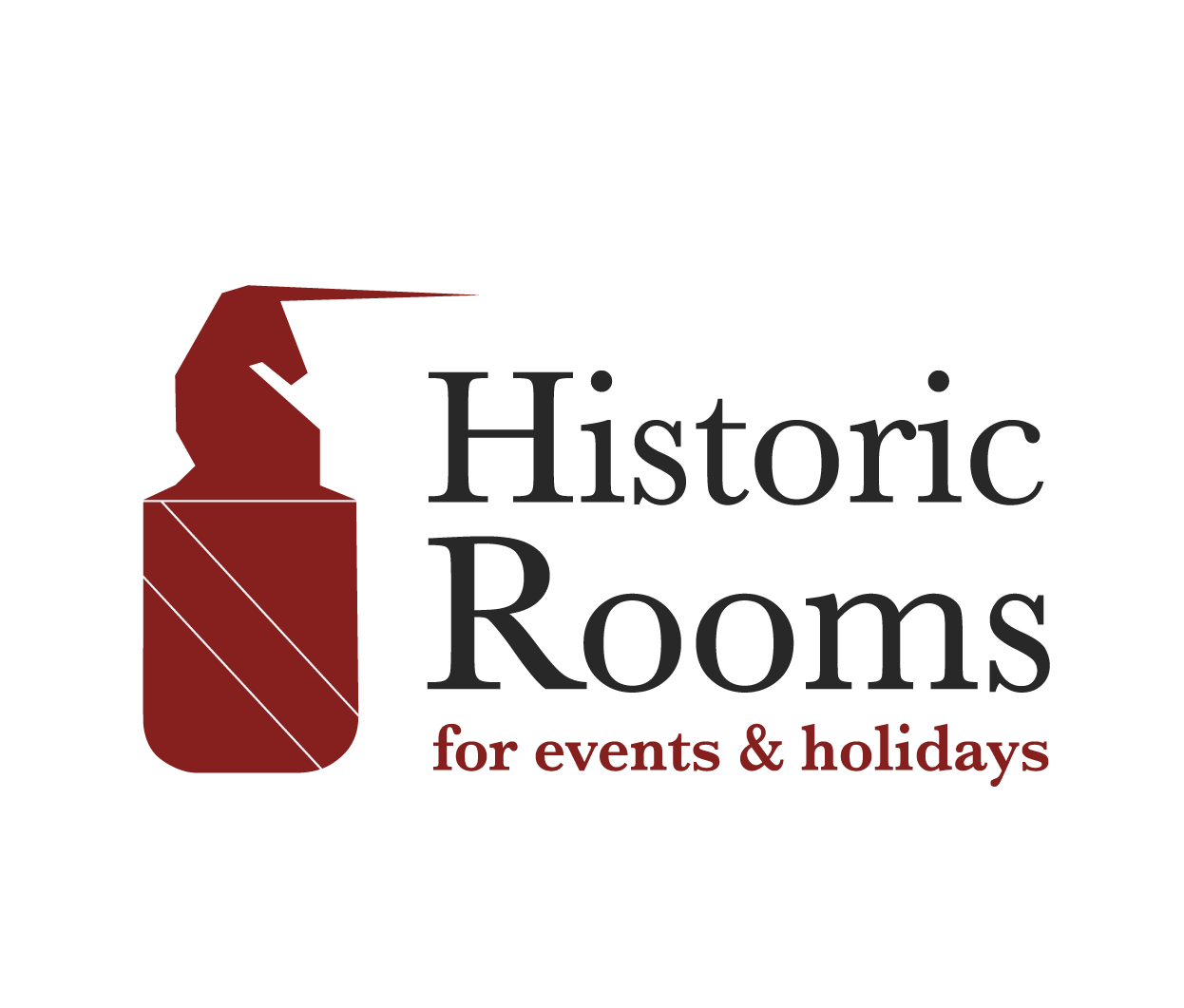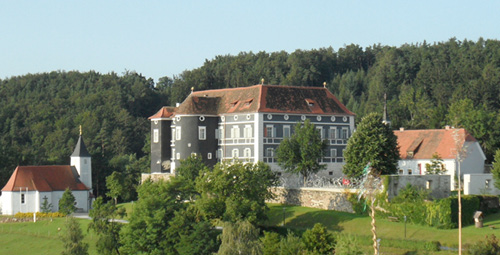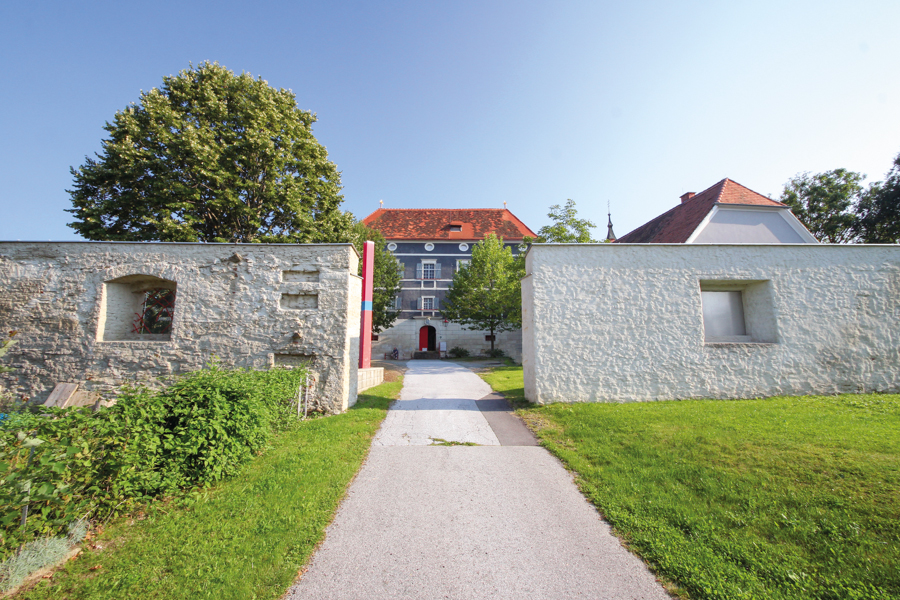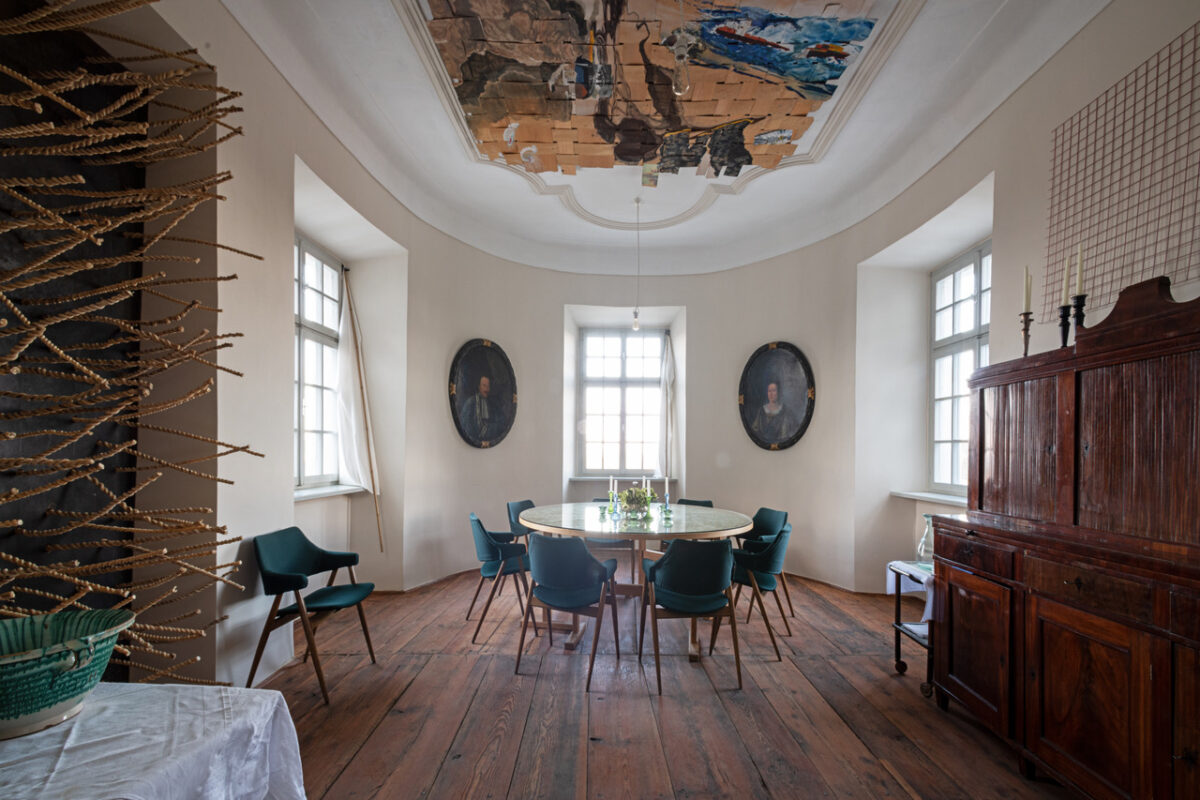History, mysticism, art – to experience at close hand
- 1 Apartment Rooms
- ca. 60m² Size
- 3 Maximum number of guests
Enjoy art and stay relaxed

Aichberg Castle, soon to be 1000 years old, is a wonderful and mystical estate. It stands on a hill near the village of Eichberg between Vorau and the river Lafnitz. Here you can sit back and relax, sink into thousands of books, discuss the Middle Ages with the master of the house and marvel at paintings and sculptures by contemporary artists.
You will stay in a cosy apartment of over 60 m² with an interesting mix of antique and modern furniture. Every corner of the house tells the long history of the property.
-
Single room EUR 97,-
-
Double room EUR 167,-
-
3 bedroom EUR 210,-
-
2 adults and 2 children – Price on request
Delicious Viennese breakfast included
Arrival: 2pm till 7pm
Check out: till 10am
from 14 days before arrival 50% of the total booking amount is due;
from 3 days before arrival 100% of the total booking amount is due.
| Means of transport / Destination | Location | Distance |
|---|---|---|
| Bus | Eichberg | 100m |
| Train | Rohrbach an der Lafnitz | 2,4km |
| Airport | Graz | 73km |
| Shopping | Rohrbach an der Lafnitz | 2,4km |
Apartment
The OBEN flat is a particularly atmospheric room with a double bed dating from 1870.UNTEN flat
The UNTEN flat offers over 70m2 of living space with an exceptional atmosphere.The room/apartment/property is equipped with
- WLAN in the whole house
- Heating
- Antique furnished
- View
Bedroom
- Room size over 20m2
- Linen
- Extra cushions and blankets
- Baby cot
- Writing desk
- Electric kettle/Coffee machine
Bathroom
- Shower
- WC
- Towels
- Hairdryer
Culinary
- Breakfast
- Local products
Garden
- Sunbathing area
- Sunbed
Children
- Children's high chair
Kitchen
- Coffee machine
- Electric kettle
- Fridge
Others
- not barrier-free
- Non Smoking
- No pets
- Guided castle tour
- Parking area
In the surrounding area
- Mountainbike/Cycling
- Lake
- Skiing
- Hiking
- Culture
- Riding
- Golf
- Tennis
- Table tennis
- Cross country skiing
Payment
- Online payment/credit card
1000-years of history

The history of the area begins not only during the land grab and clearance by Bavarian and Franconian colonists at the end of the 12th century; in the border area, Celts, Romans, Slavs and Avars settled here in earlier times.
After military conflicts with Hungary, the border between the Holy Roman Empire and Hungary was established at the Lafnitz around 1043. In this area, which was poorly settled owing to the border situation, construction of a belt of castles began at the end of the 12th century to defend against military invasions from the east. A supporter of the local ruler took over and expanded the existing settlement. The first documentary mention of a person from Aichberg dates from 1250: Konrad von Aichberg, who probably also founded Kleinschlag, which is named after him.
The noble Aichberg family was resident here until the late 14th century; the castle chapel, the present parish church, was built in stone under Wulfing von Aichberg in 1378. At the beginning of the 15th century, Aichberg came into the possession of the Welzer family via the daughter of the last Aichberg; it was then sold to Seyfried Steinpeiß in 1412. In the following year, Steinpeiß also bought the tithes of Pinka, Friedberg, Dechantskirchen, Stegersbach, Kleinschlag, Limbach, Rohrbach and between Lafnitz and Lungitz.
For the next 350 years (until 1772) Aichberg was the home of the noble Steinpeiss family (elevated from knights to counts in 1672). The period is characterised by:
Participation in the revolt of the nobility in 1469/70 on the side of Andreas Baumkirchner’s reformation and counter-reformation: even at the time of the visitation in 1528 it was that Maximilian Steinpeiß von Aichberg was among those who subscribed to the new teaching of Martin Luther. His son, Christoph, was punished in 1603 – i.e. after the victory of the counter-reformation – as he had his child baptised as a protestant outside the country.
In 1772, after the death of the last Steinpeiß, Karl Joseph Count of Steinpeiß, the will resulted in the property passing to his cousin, Maximilian Baron of Waidmannsdorf.
A rapid change of ownership followed as well as the decline of the castle and the property. First, Maximilian Baron of Waidmannsdorf sold it to merchant Johann Edmund Edlen von Erko in 1779. He no longer lived in Aichberg.
In 1806 his descendants leased out the completely indebted property and eventually had to raffle it in a prize draw in 1817, with a ticket price of 15 Gulden (around € 21 today). Prague paper merchant Donat Hartmann won and he immediately sold the property to Cavalry Master Ludwig Count of Schönfeld for 200,000 Gulden (its estimated value was 368,328 Gulden). Count von Schönfeld also bought the Reitenau estate, but died in a riding accident in 1828.
Three years later, the indebted estate was bought at auction by state councillor Heinrich von Müller-Hörnstein, an army supplier who had come into wealth. After his death, the heirs sold the property in 1843 to Marianne Freiin von Eskeles, daughter of banker Eskeles and later wife of Franz Count of Wimpffen. The property therefore came into the possession of the Counts of Wimpffen for 100 years.
100 years in the possession of the Counts of Wimpffen
Under the Wimpffen family, the Loretto Chapel consecrated in 1742 was rebuilt in 1844 as a crypt chapel in neo-Gothic style. To pay off debts, the property was sold to the Greek princes Ypsilanti in 1906. In 1911, a school building was constructed in Eichberg, for which Prince Ypsilanti donated a plot. As early as in 1882, conversion of the farm building had turned a single-class school into one with two classes.
In the course of its changeable history, Schloss Aichberg has been modified or extended nine times. The present building dates from 1669 and is by a builder from the Carlone school. During theFirst World War Galician refugees were housed in the castle and used the wood of the roof truss as firewood. Towards the end ofsecond world war it provided accommodation for the German armed forces. The castle has been privately owned since 1986 and has been redecorated and is now home to a museum. Local artists exhibit their work in the castle museum.




 >
>
Schreibe einen Kommentar